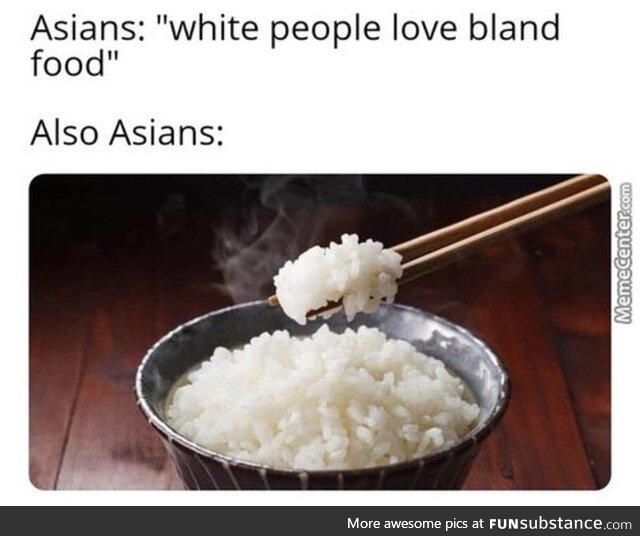Featured Posts

I wish I had a fort

The powerof positive thinking

NASA

Pray for Australia

Take care of each other

She has emerged

My soul feels so much better

I just ordered one. #Just2019HispanicThings

He really wanted his photo at the Halloween party, but was super scared of the spiders

The Only Thing More Contagious Than COVID19 Might Be This Fox's Smile
About
FAQ
Contact
Rules
Terms
Privacy
Feedback
Keyboard Shortcuts:
Previous Post · Next Post · + CTRL Skip Post
Previous Post · Next Post · + CTRL Skip Post
© 2026 FunSubstance · funny and entertaining pictures, memes, gifs & videos.



It is also the case, as in many other cultures and especially in cuisine traditions from before mass agriculture and commercial livestock etc. that more flavorful foods or meats were often harder to get and more expensive or precious.
Processed grains like rices, breads, noodles etc. are commonly used this way to “absorb” flavor from other ingredients. Broths and stews are a classic food used to “stretch” ingredients and create dishes that have more flavor than might otherwise be practical for the ingredients in hand to produce the required servings.
While it isn’t unheard of or anything- it’s a bit like someone sitting down and eating a plate of plain spaghetti or fettuccini noodles, generally speaking when such noodles are served they are part of a dish or intended to be eaten with sauces or other foods as part of a meal. We can say the same of crackers- people do eat crackers by themselves sometimes for various reasons and crackers are often served separately, but usually they are eaten along with other foods.
For example, the United States tends to have on the whole very sweet cuisine and most people born into the USA culture tend to have a taste for sweeter foods than much of the rest of the globe.
Rice and noodles are two common staples in many types of asian cuisine but they hardly reflect the bulk of cuisine from any particular asian culture let alone an entire general grouping. There is also a matter when we speak of the foods or traditional foods of a culture, of regions and demographics.
If we examine traditional foods and compare them, we often have to distinguish when comparing foods from different demographics. Generally speaking if you compare what royalty or the equivalent tended to eat in a period for one culture to what was more common “peasant food” or “street food” etc- it isn’t inherently a fair comparison, but we have to remember that all sorts of things impact this. In one place and time for example, it may have been illegal or unrealistic for peasants to have venison. Such animals may have belonged to a ruler or land owner by default. In another place and time, hunting may have been the way of things for peasants and thusly venison may have been a peasant meal.